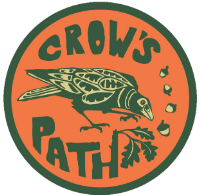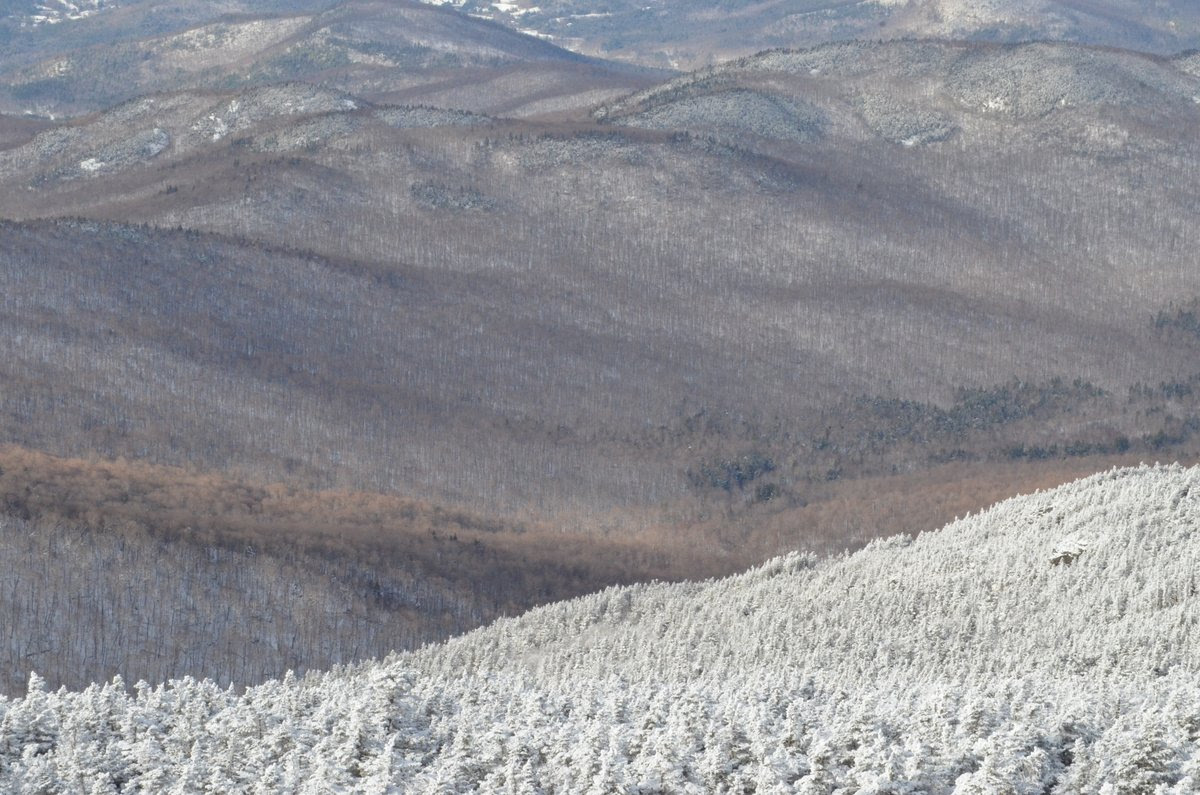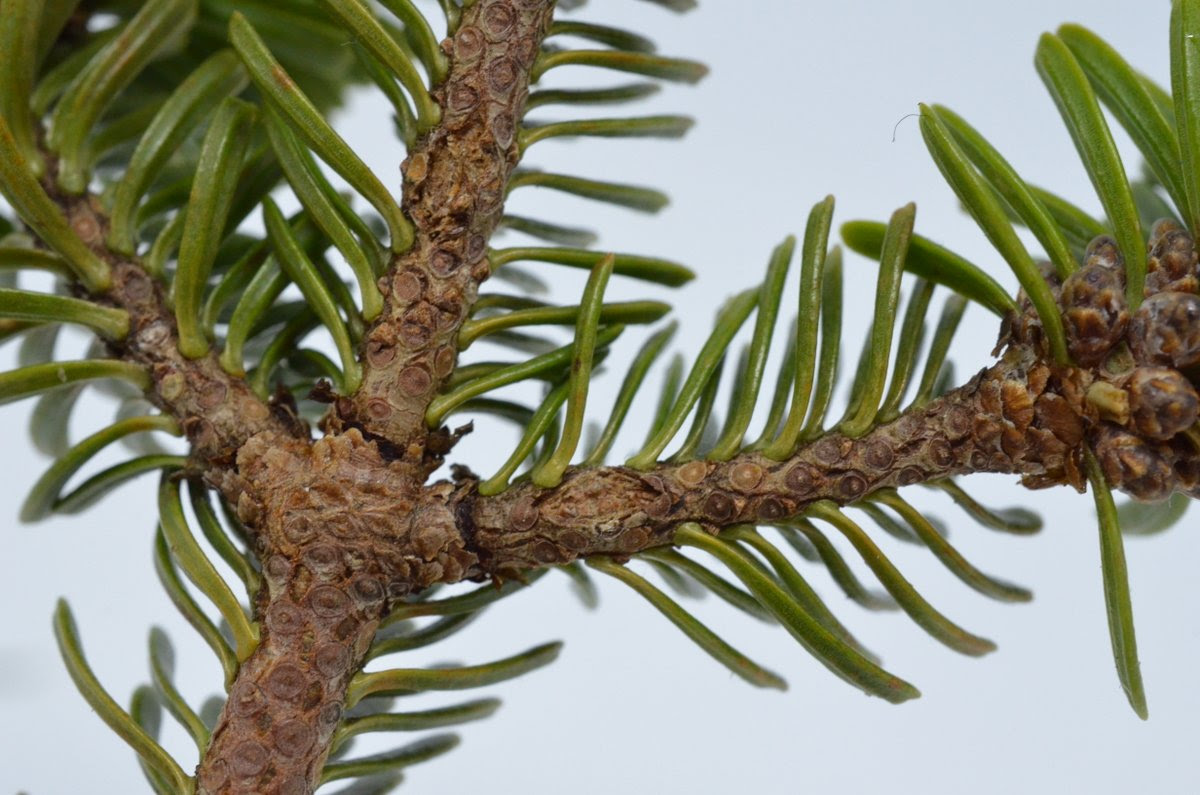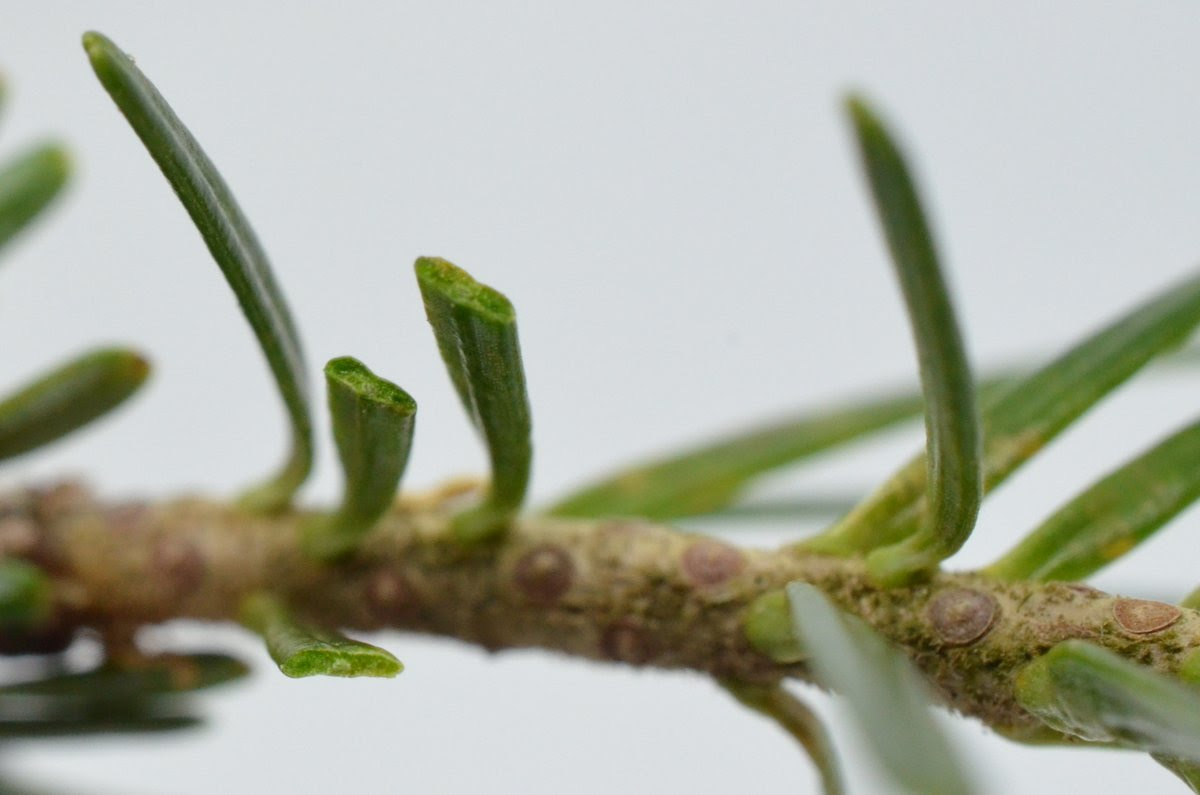
Issue #2.03.a | Identifying conifers
If yew’ve been pining to spruce up your conifer ID skills, then you’re in fir a treet (insert groan here). I’ve been wanting to put together a quick reference guide to our conifers and am just now getting around to it. Enjoy!
-Teage
An overdue thank you to John S., our newest patron! Thanks for your support on Patreon!
Who are the conifers
Identification – whether of birds, ferns, tracks, fungi, amphibians – is all about learning where to look. Once we know where to look, we can start to pick out patterns. In my short series about tracking, finding patterns was the key to learning common gaits and ultimately pin a gait to a species. As a group, conifers are quite easy to pick out of a crowd. They’ve got deep green needles that stick out against the drab winter background. Even in summer, their dark green foliage contrasts sharply (and quite aesthetically) with the light green of the broad-leaf trees. We don’t have many conifers up in Vermont, so learning to tell one conifer from another is quite simple once we know what patterns to look for.



What to call a conifer
Before we look at some patterns, I want to first define what a conifer is and clarify some confusing terminology. Conifers are frequently referred to collectively as softwoods, evergreens, or gymnosperms. The other 3 terms for conifers are either colloquial or not specific enoughand less than perfect for the following reasons:
- Conifer: The term conifers points to an actual taxonomic group. This group, the order Pinales (formerly Coniferales), is the taxonomic equivalent of the mammalian orders: primates, rodents, and bats. It encompasses all of the trees with needles and cones.
- Softwood: Some “softwoods” are much harder than most hardwoods and some hardwoods are rather soft. The Janka test is a measurement of the amount of foot pounds it takes to drive a .444″ steel ball half its diameter into a piece of wood. Hickories are on the upper end of the scale at around 1850 lbf. But the not-so-soft “softwood,” Australian cypress, is not far behind at 1375 lbf. On the softer end of the scale are aspen at 540 lbf, basswood at 410 lbf, and balsa, the super-soft hardwood, at just 70 lbf.
- Evergreen: Some conifers are deciduous, most notably tamarack and the other larches (Larix spp.), and some broad-leaf trees, like rhododendrons, are evergreen (evergreen broad-leaf trees are more common in Massachusetts and south).
- Gymnosperms: While all conifers are gymnosperms, not all gymnosperms are conifers (e.g. ginkgo and cycads), so the term gymnosperm is not restrictive enough for us here.

What to look for
Here in Vermont, we’ve only got about 15-20 wild conifers (see iNaturalist for records), so ID isn’t all that tough. But by looking closer at a few features, however, you should be able to ID a conifer almost anywhere in North America, most of Europe, and a great swath of Asia down to family and often genus. Not bad. Here’s what you should look for:
- Type of Leaf: are the needles small overlapping shingle-like scales (as on cedars) or are they long, narrow needles (as on hemlock)
- # of Needles: Are the needles borne singly or do they emerge from the twig in clusters of 2 or more?
- Shape of leaf in cross-section: If you look at a needle borne singly, are they flat or square in cross-section?
- Needle attachment (for single needles): Do the needles attach directly to the twig or are they borne on small woody pegs (sterigmata)?
- Type of cone: Are the cones woody or are they fleshy and fruit-like?
There are certainly other things to look for (like the fibrous bark of the cedars), but by using just these 5 features, you’ll be able to identify a conifer down to the genus. In the next newsletter I’ll show you how to use these features to do just that! Below is a sort of visual glossary of these different features.
Type of leaf





Attachment


Cross-section


Cones


Some Resources on Conifers
- My tree ID guides: link
- Janka hardness test: link
- Hardness rating of various softwoods: link
- Species profiles of conifers: link
Thanks for reading, and please consider supporting this newsletter on Patreon.
And don’t forget to check the archives for back issues.
Got an idea for a future newsletter, shoot me an email!
Instagram | Facebook | Website
View this email in your browser
Copyright © 2020 Phyllotaxy, All rights reserved.
Our mailing address is:
Phyllotaxy, 56 Latham Ct, Burlington, VT 05401-1522


